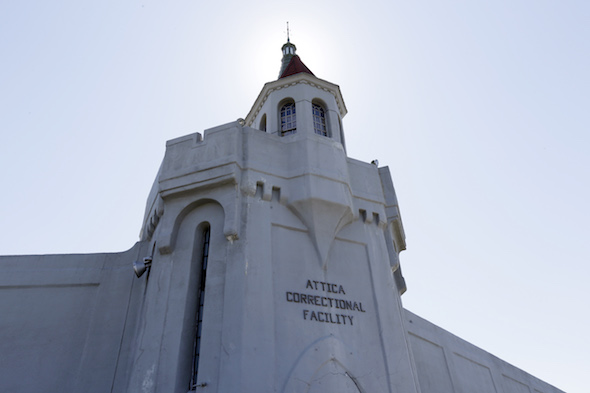Heather Ann Thompson’s book “Blood in the Water: The Attica Prison Uprising of 1971 and Its Legacy” is a detailed study of the inner workings of America. The blueprint for social control employed before and after the crushing of the Attica revolt is the same blueprint used today to keep tens of millions of poor people, especially poor people of color, caged or living in miniature police states. Thompson meticulously documents the innumerable ways the state oppresses the poor by discrediting their voices, turning the press into a megaphone for government propaganda and lies, stoking the negative stereotypes of black people, exalting white supremacy, ruining the lives of people who speak the truth, manipulating the courts and law enforcement, and pressuring state witnesses to lie to obstruct justice. Her book elucidates not only the past but also the present, which, she concedes, is worse.
“America by the early twenty-first century had, in disturbing ways, come to resemble America in the late nineteenth century,” Thompson writes near the end of her book. “In 1800 the three-fifths clausegave white voters political power from a black population that was itself barred from voting, and after 2000 prison gerrymandering was doing exactly the same thing in numerous states across the country. After 1865, African American desires for equality and civil rights in the South following the American Civil War led whites to criminalize African American communities in new ways and then sent record numbers of blacks to prison in that region. Similarly, a dramatic spike in black incarceration followed the civil rights movement—a movement that epitomized Attica. From 1965 onward, black communities were increasingly criminalized, and by 2005, African Americans constituted 40 percent of the U.S. prison population while remaining less than 13 percent of its overall population. And just as businesses had profited from the increased number of Americans in penal facilities after 1870, so did they seek the labor of a growing captive prison population after 1970. In both centuries, white Americans had responded to black claims for freedom by beefing up, and making more punitive, the nation’s criminal justice system.”
On Sept. 9, 1971, prisoners at the Attica Correctional Facility in upstate New York rebelled in the face of intolerable conditions. They were sick of the racist-fueled violence of the white, rural guards; angry at poor medical care and the dearth of vocational and educational programs; underfed (the prison allocated only 63 cents a day to feed a prisoner); unhappy about their mail being censored, or destroyed if it was in Spanish; living in poorly ventilated cells with little or no heat or stifling heat; unable to buy basic commissary items on salaries that averaged 6 cents a day; and tired of being given only one bar of soap and one roll of toilet paper a month and allowed only one shower a week.

